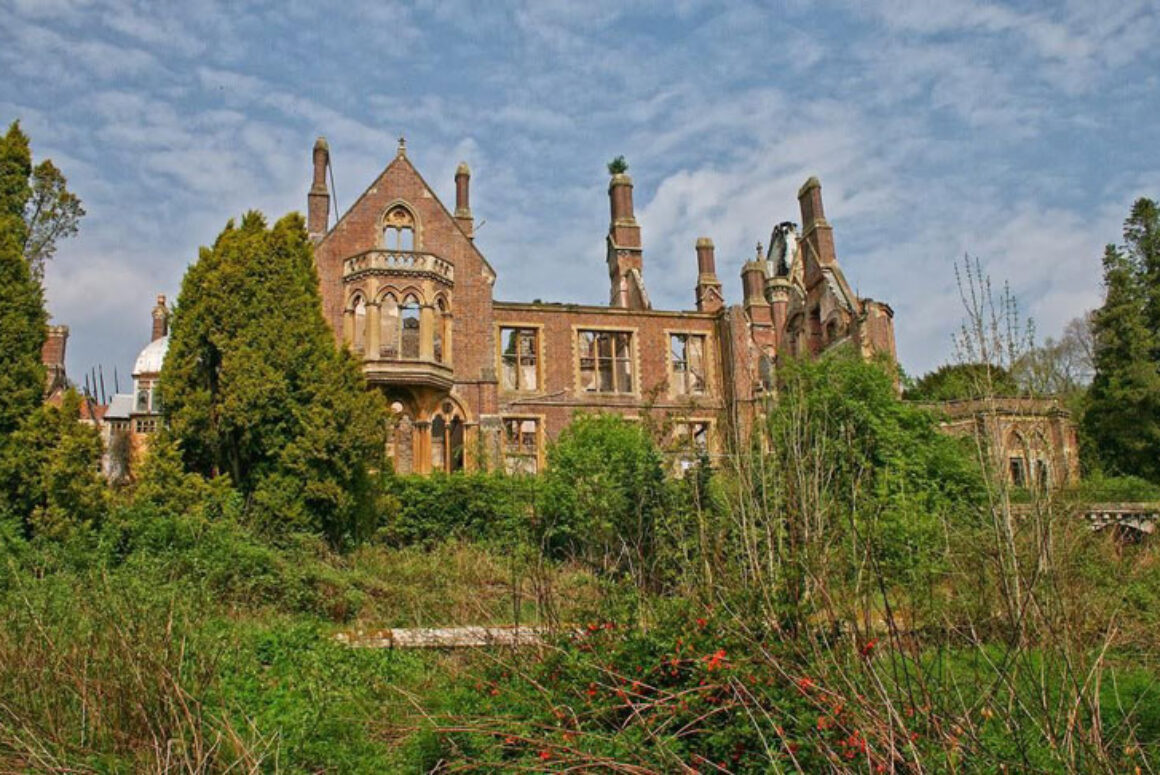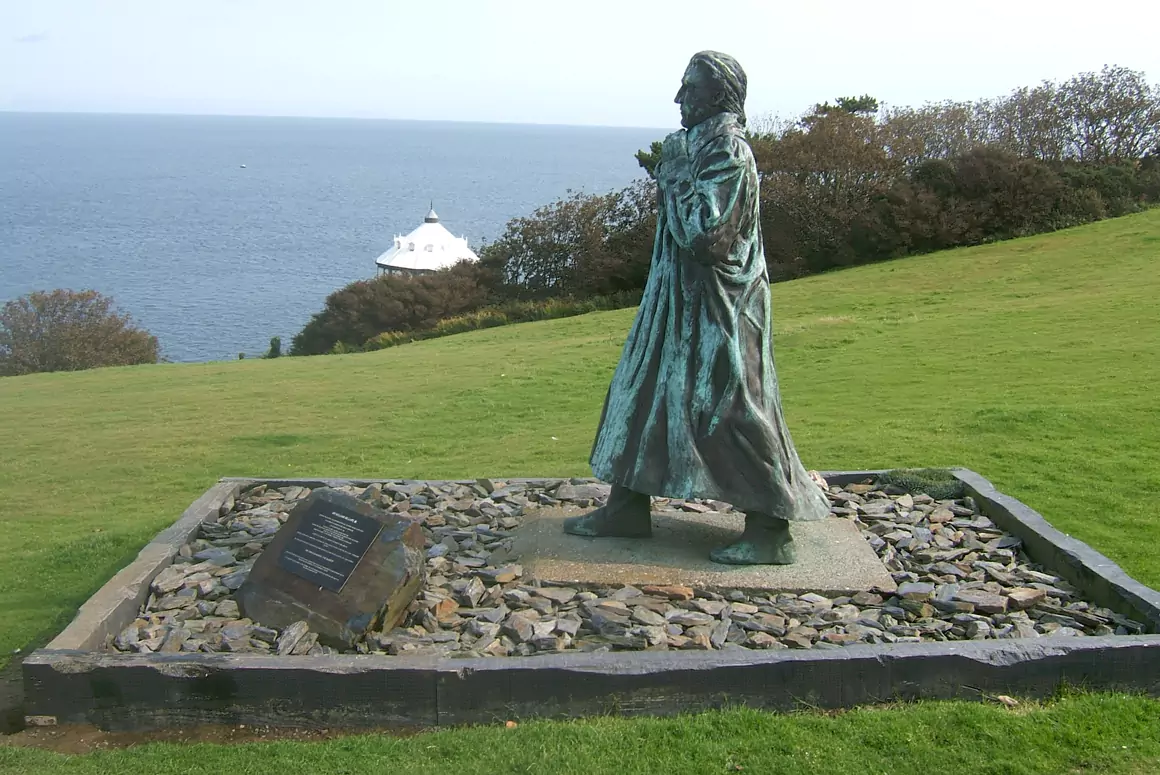![]()
Situated in the picturesque Elwy Valley, Llangernyw is one of a declining number of villages which has managed to retain its traditional culture and language, whilst gradually developing to meet the needs of the 21st century.
Eight miles south west of Abergele and benefiting from spectacular views across the open countryside and farmland, its peaceful location ensures Llangernyw really is a hidden gem. Within walking distance are the remains of the Gothic mansion known as Hafodunos Hall – ravaged by fire in 2004 – but still a reminder of what an important building this once was.
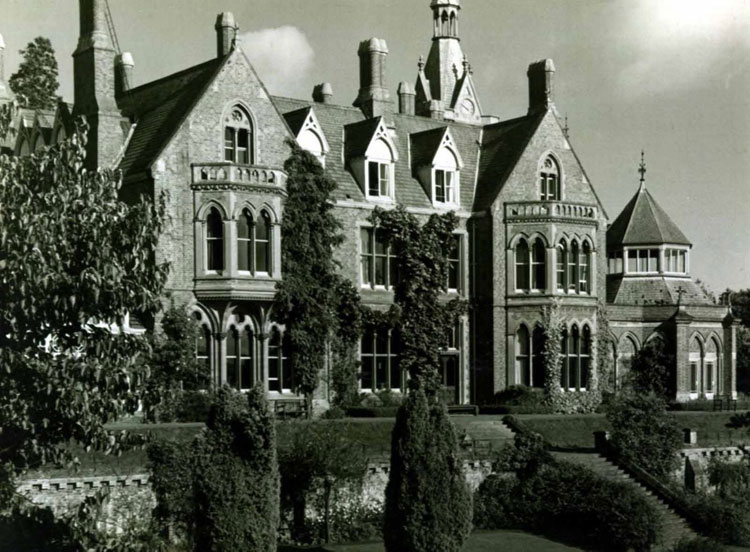
In 1830, the Sandbach family bought the estate, but it was Henry, son of Liverpool merchant Samuel Sandbach, who commissioned Sir George Gilbert Scott to redesign the hall between 1861 and 1866, replacing the original house with a modern outlook.
Scott was well known for his architectural skills and ultimately was responsible for the forward thinking construction of St Pancras Station in London and the Albert Memorial in Hyde Park. His son John Oldrid Scott also helped with the construction of Hafodunos and his grandson Giles Gilbert Scott continued in the same line of work designing Liverpool Cathedral, Battersea Power Station and many churches and buildings of note throughout the country – he even devised the layout of the famous red telephone boxes.
But, it was Hafodunos Hall which was the only example of George Gilbert Scott’s elaborate country house designs in Wales. Built in his trademark red brick, the Venetian inspired Gothic residence housed impressive plaster and marble reliefs. Five of these – by John Gibson – can now be seen in the Walker Art Gallery in Liverpool, along with other fine examples of sculpture from Henry’s collection, given by his descendants in lieu of inheritance tax.
Sadly, this palatial dwelling passed from the Sandbach family in the 1930’s, going on to be used as a variety of businesses from a private girls school to a residential home, but due to severe problems with dry rot and the inability to find a suitable owner, Hafodunos closed in 1993 before eventually being bought by a developer with plans to turn the Hall into a hotel and possible caravan park.
Before these new schemes could be put into action, Hafodunos became the victim of a devastating fire which ripped through the main house destroying much of the fine architecture inside. Although the servant’s quarters and conservatory were untouched, the future of Llangernyw’s Hafodunos Hall hangs in the balance once again.
A Place of Worship
At the heart of the village lies St Digain’s Church and although it’s thought to date back to the 13th century, there are numerous examples of links to the churchgoers of the late 1800’s. Inside the cruciform layout, an inscription, to the Lloyd family of the Hafodunos estate, appears in the east window, which was given by Phoebe and Susanna in memory of their parents. This is believed to be one of the oldest stained glass windows in north Wales. A doorway from the Vestry – erected in 1898 – is dedicated to the memory of Henry Robertson Sandbach (1807-1895) of nearby Hafodunos Hall. The window in the South Transept was painted by Ballantyne and depicts ‘Faith, Hope, Brotherly Kindness and Charity’ and this is dedicated to Henry Sandbach’s first wife, Margaret who died in 1852. It was Henry’s second wife who helped purchase the organ, which was originally built for use in India. Crafted by the company Bishop and Son, these specialists also built organs for the Brompton Oratory in London and the Bombay Cathedral in India.
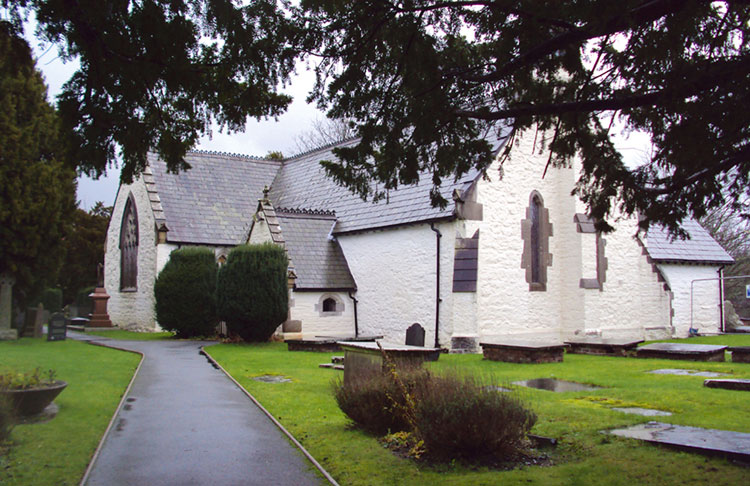
Outside, the Lychgate forms a fitting entrance to St Digain’s where the erection date of 1745 can clearly be seen carved into the timber above the iron gates. Details of the cost of construction were recorded in the Church Warden’s Accounts Book, which still survives today, and states that the timber used cost three pounds, fifteen shillings and sixpence – quite an expense in 1745.
But it’s without doubt that one of St Digain’s main claims to fame is that the churchyard contains one of the oldest living yew trees in the world. Located in the north of the grounds, the yew takes centre stage and has an estimated age of 4000 years old. Although these trees are usually measured by the annual growth rings, in ancient yews it’s common for the centre to rot away making it difficult to get an accurate date. Where a yew has split, an approximate age is calculated, and in this instance, a measurement is taken from the girth of the tree about 1.3 metres from the ground.
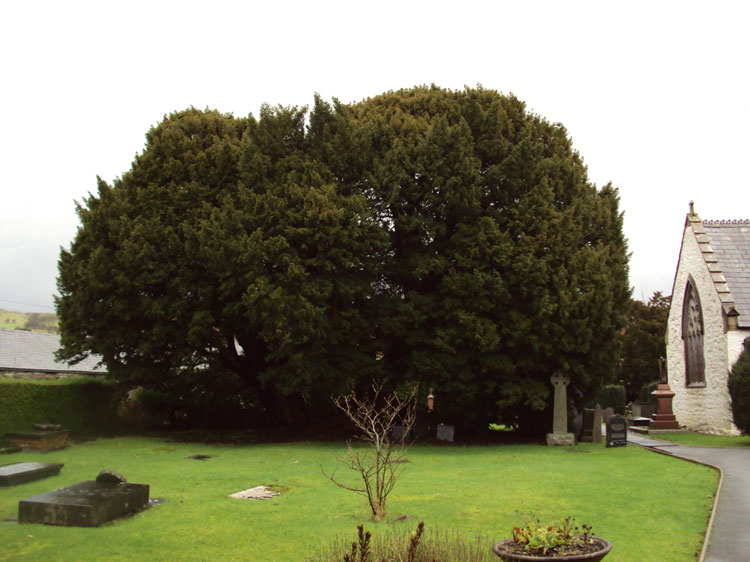
Llangernyw paid homage to their ancient yew by erecting a Welsh slate plaque on the 25th of November 1995 when the tree was blessed by the vicar as part of National Tree Week. Forgotten for centuries, it was a tree survey in the mid 1990’s by the Volunteer Tree Wardens of Clwyd that led to its rediscovery and acknowledgment of its importance.
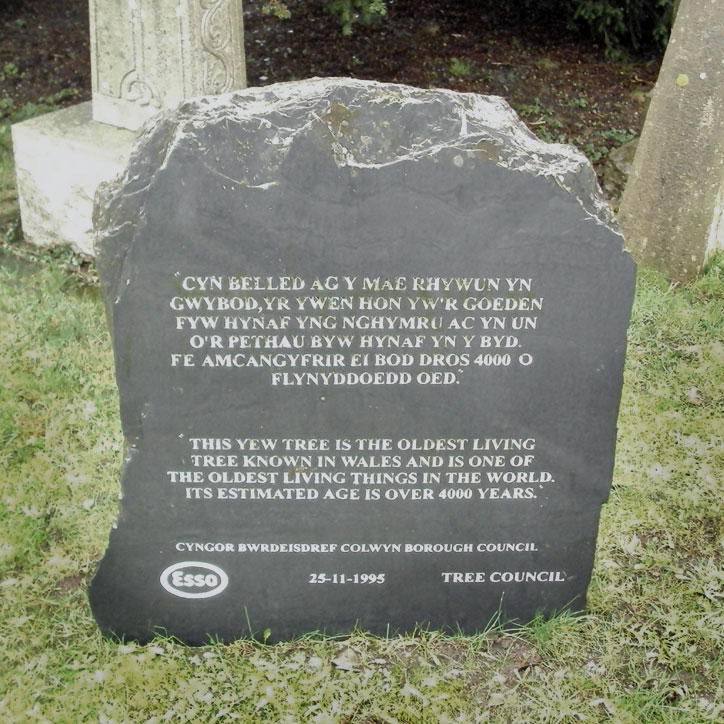
Yews are often found in churchyards. They grow very slowly and lend themselves to their settings as they have very few predators, due to their poisonous nature. They regenerate as the old wood rots away, and growth is encouraged as their branches touch the ground and send out new roots.
The fact that the yew seemed to ‘last forever’ helped to create an air of mystery around the tree and they were considered sacred by Christian worshippers, revered and respected in the belief that they had special powers.
Influence and Inspiration
With a village shop and the popular Stag Inn pub on the doorstep of the church, you could be excused for thinking you had seen all that Llangernyw had to offer, but venture a little further over a tributary of the river Elwy which cuts across the main road and opposite the school you’ll discover another fine example of this community’s heritage.
A well preserved, white washed cottage is now a museum and once the childhood home of the eminent Professor of Moral Philosophy at Glasgow University – Sir Henry Jones (1852-1922). Here, in the tiny kitchen and bedroom, where six of his family slept and ate, Henry Jones grew up, leaving school at the age of twelve to help his father, the local shoemaker. Despite this, he was encouraged to learn and spent his evenings pouring over books to continue his education. His perseverance paid off and he won a scholarship to become a teacher.
His memories of life in the shoemaker’s workshop and that of his fellow villagers spurred him on to try and improve the education system in Wales and in 1912, he was knighted for his dedication to the cause. Following his death in 1922, a memorial fund was established which enabled his childhood home – Y Cwm – to be bought and by 1934, with the help of David Lloyd George, as Vice President of the fund, the property was opened as a museum.
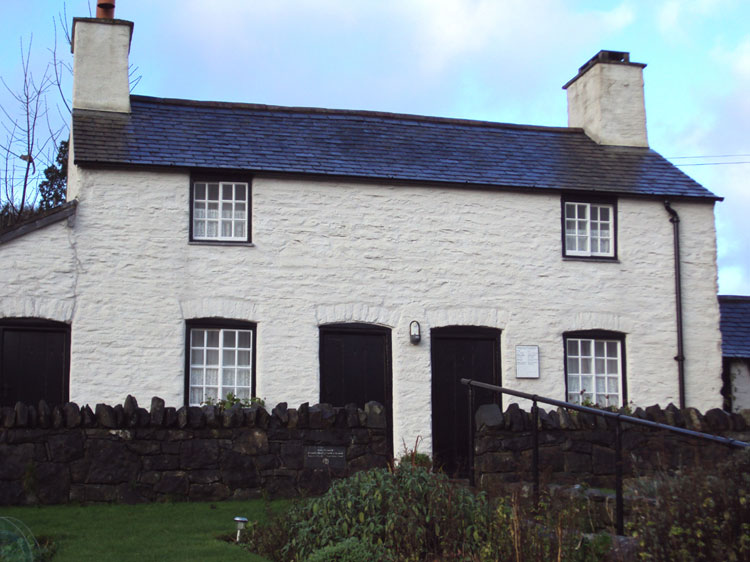
Llangernyw is definitely a well kept secret, with lots to offer the casual visitor to this area of Wales. From ancient yews to educational reforms, this village really encompasses the modern phrase ‘from nature to nurture’ allowing you to glimpse important aspects of our history across a truly varied timeline.
Useful information:
Henry Jones Museum: Y Cwm, Llangernyw, Abergele, LL22 8PR
Tel: 01745 860630
Website: amgueddfasyrhenryjones.org.uk


